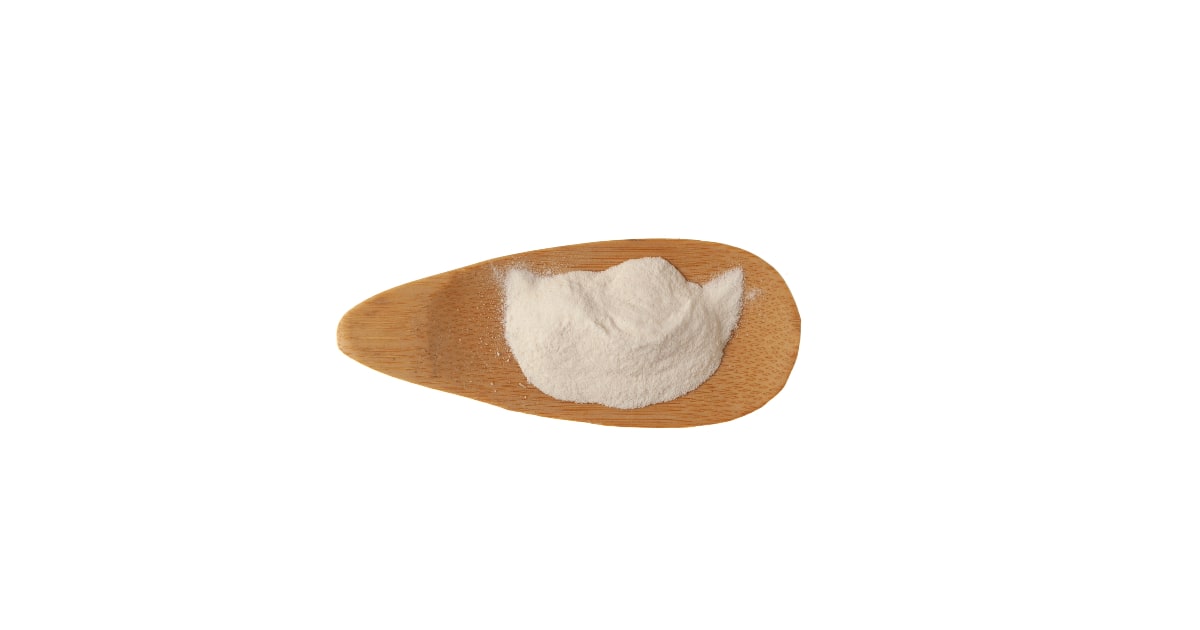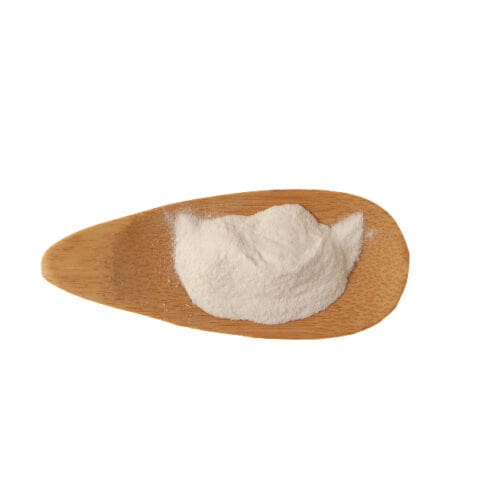Konjac powder, also known as konjac flour or konjac root powder, is a gluten-free flour made from the konjac plant. The konjac plant grows in Asia and has been used for centuries in Asian cooking for its health benefits and as a thickening agent.

Konjac powder is unique because it is over 90% soluble fiber. This high fiber content means that konjac powder can absorb up to 50 times its weight in water, forming a gel. This makes konjac powder an excellent thickener and gives it some interesting cooking properties.
The konjac plant, also called elephant yam or devil’s tongue, is a tuber vegetable native to Eastern Asia. An edible corm (bulblike stem) grows underground from the konjac plant and is harvested and ground into a powder to make konjac flour.
Some key facts about konjac powder:
- Made from the ground corm of the konjac plant
- Over 90% soluble fiber (a type of fiber that dissolves in water)
- Gluten-free
- Has gelatin-like thickening properties when mixed with water
- Commonly used in Asian cooking
- Low calorie (just 10 calories per serving)
In powder form, konjac has no flavor or aroma on its own. So it takes on the flavors of the dishes it’s used in.
Konjac flour is the most common type used for cooking, while konjac root powder is purely the ground konjac root with no additional processing. Both work well as thickeners in recipes.
Key Takeaway: Konjac powder is a type of flour made from the konjac plant. It's over 90% soluble fiber and becomes gelatinous when mixed with water. This makes it an excellent thickener in recipes.

Konjac Powder Recipe
Ingredients
- 1 konjac/glucomannan root
- Food dehydrator (optional)
Instructions
- Thoroughly wash the konjac root under running water to remove any dirt or debris. Pat dry.
- Using a sharp knife, shred or grate the konjac root into small flakes or pieces. The smaller the pieces, the faster and more evenly they will dehydrate.
- Line dehydrator trays with parchment paper and spread the konjac pieces in an even layer, making sure they are not overlapping.
- Dehydrate at 115°F for 6-12 hours, checking periodically and stirring the pieces around. The konjac is fully dehydrated when very dry and brittle.
- Alternatively, you can dehydrate in the oven on the lowest temperature setting with the door propped open. Spread pieces on a baking sheet and stir periodically. This will take longer, up to 24 hours.
- Once fully dried, transfer the konjac pieces to a food processor or blender. Pulse until a fine powder forms. Ensure it is evenly ground.
- Store the konjac powder in an airtight container in a cool, dry place. Properly stored, it will keep for several months.
- To use, mix the konjac powder with water. It will gel to create a jelly-like konjac paste that can be used for cooking, baking, and more. Start with a small amount of powder first to gauge the right water ratio.
Benefits of Using Konjac Powder
Adding konjac powder to your recipes offers some great health benefits:
Supports digestive health: The soluble fiber in konjac powder helps promote digestion, regularity, and overall gut health. The fiber also helps feed the good bacteria in your intestines.
Helps manage weight: Konjac flour is very low in calories but high in fiber. This helps promote feelings of fullness and can assist with weight loss or maintenance.
Helps regulate blood sugar: The soluble fiber in konjac powder helps block sugar absorption, which can help regulate healthy blood sugar levels, especially for those with diabetes.
Lowers cholesterol: Some studies have found konjac fiber binds with cholesterol in the body and removes it before it’s absorbed. Over time this can help lower LDL or “bad” cholesterol.
So using konjac powder in cooking is an easy way to boost the nutrition in meals!
How to Cook With Konjac Powder
Cooking with konjac powder is different from regular flours and starches. Here are some key tips:
It gels quickly: Konjac flour starts to form a gel as soon as it touches liquid. So it's important to mix it in quickly when adding it to recipes.
Use a blender for smooth textures: Because konjac powder becomes gelatinous so quickly, it needs to be broken down properly in the dish. Using a blender helps create smooth, lump-free textures.
Start with small amounts: A little konjac powder goes a long way in recipes! Start by using just 1/2 to 1 teaspoon per serving in recipes and adjust from there.
Heat it properly: Konjac flour needs to be simmered for 1-2 minutes in recipes to remove any powdery texture. This helps it properly thicken dishes.
Follow those tips and konjac powder is simple to use. It works best in chilled desserts, smoothies, simmered sauces, and Asian noodle or rice dishes.
Now let's look at a versatile konjac powder recipe!
Simple Konjac Powder Recipe - Sweet Rice Pudding
This easy konjac rice pudding recipe highlights the wonderful thickening power of konjac powder. Sweet, smooth, and creamy - it makes a light and healthy dessert.
Ingredients:
- 3 cups almond milk (or milk of choice)
- 1/3 cup white rice
- 2 tablespoons konjac powder
- 2 tablespoons honey or maple syrup (to taste)
- 1 teaspoon vanilla extract
- 1⁄4 teaspoon cinnamon
- Pinch of salt
- Sliced fruit, coconut flakes, or cacao nibs for topping (optional)
Instructions:
- Add the rice and milk to a small saucepan. Bring it to a gentle simmer over medium heat.
- As soon as it begins to simmer, remove it from the heat. Stir in the konjac powder quickly until there are no clumps.
- Return the pan to low heat and let it simmer for 2 minutes, stirring constantly. This helps the konjac powder gel and thickens the mixture.
- Remove pan from heat. Stir in the honey, vanilla, cinnamon, and salt.
- Cover and refrigerate pudding for at least 2 hours, until chilled and set.
- Serve in bowls topped with desired toppings. Enjoy!
The konjac powder gives this simple rice pudding recipe some great health benefits. It creates a rich, creamy texture without the need for heavy cream. You can swap out the type of milk and sweetener to customize it.
It's also endlessly adaptable. Once you have the konjac powder basics down, it can be added into both sweet and savory recipes for extra nutrition.
FAQs
What can I use instead of konjac powder?
If you don’t have konjac powder, you can substitute cornstarch, tapioca starch, or arrowroot starch as a thickener instead. The texture won’t be quite as gel-like, but they’ll still help thicken dishes. You can also try substituting xanthan gum. Start with about half the amount of konjac powder called for.
Is konjac powder gluten-free?
Yes, konjac powder is naturally gluten-free! This makes it a great option for gluten-free baking and cooking. It creates structure and thickness in gluten-free dishes.
Is konjac keto-friendly?
Definitely! Konjac flour contains very few digestible carbs or calories, making it a keto diet approved ingredient. Using konjac is a great way to thicken and add fiber to low-carb keto recipes.
Can you eat konjac powder plain?
It's not recommended to eat konjac powder plain or dry. The powder needs to be prepared properly in recipes to allow the soluble fiber to gel and for the konjac to become fully expanded. Eaten dry, it could potentially pose a choking risk or blockage.
Conclusion
Adding konjac powder to your recipes is a simple way boost nutrition. Konjac powder is low-calorie but high in fiber, which offers digestive health benefits.
It creates amazing textures thanks to its incredible water-absorbing soluble fiber.

